Guikporn 4 - we continue to open the microcircuits: БК0010, MEMS gyroscope and some Rosnano
 Half a year has passed since the publication of the previous post with opened chips. It’s time to tell you what you have seen. For those who missed the first 3 series - here one , two , three .
Half a year has passed since the publication of the previous post with opened chips. It’s time to tell you what you have seen. For those who missed the first 3 series - here one , two , three .Toshiba TCD1201D - linear monochrome CCD photosensitive sensor of 2048 elements. Sensors of this type are used in fax machines, barcode readers, and even on satellites that photograph the earth. The light-sensitive elements themselves are in line at the center of the crystal. Accumulated during the irradiation of light, the charge gradually "shifts" to the edge of the crystal with a two-phase clock signal, where it is amplified - and then can already be digitized, you will get 1 line of the image.

')

Whole crystal (34.8x0.8mm) in half resolution. In full resolution, it would no longer fit into JPEG (80k + pixels in width):

Milander 1645PT2U is a radiation-resistant permanent memory chip of 32k * 8 bits.
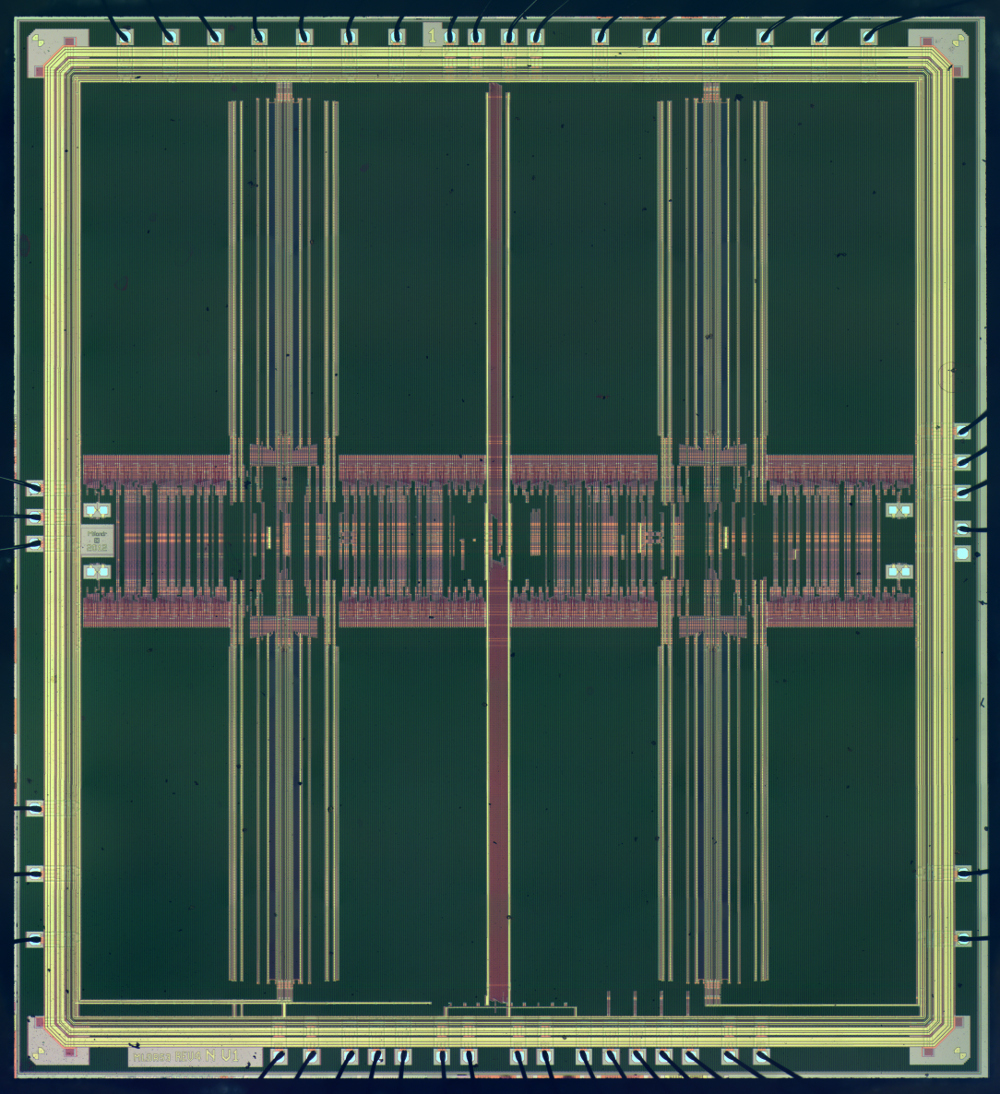
The polysilicon level, the memory blocks themselves are visible:
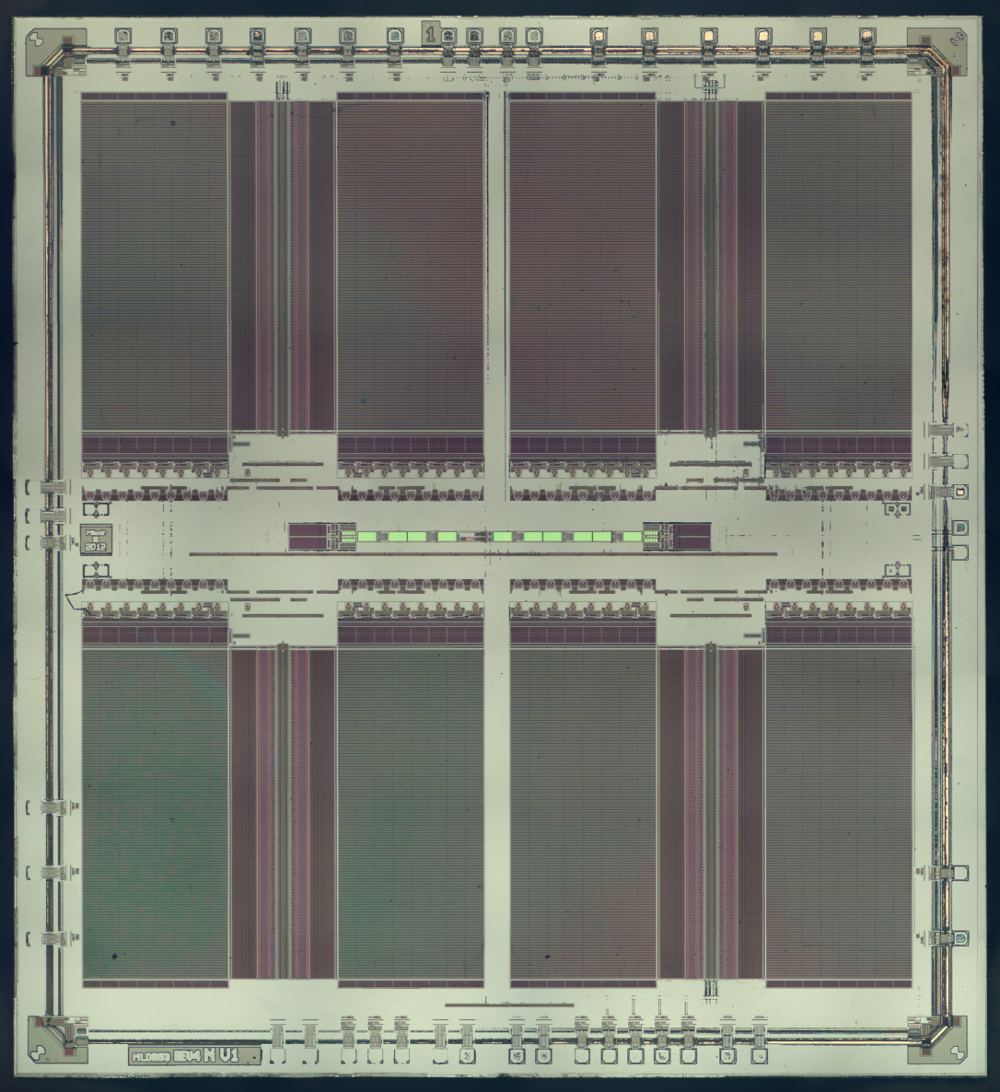
Data is stored in the antifuse element - due to the breakdown of a thin dielectric: Here the green rectangles are access transistors, and the memory cell itself - just above / below them - in the red rectangle there is an oval area with a thinner dielectric. It is there that breakdown occurs.

Invensense MPU6050 - 6-axis gyroscope + accelerometer, widely used in quadcopters and telephones. Consists of 2 crystals, welded face to face. The mechanical elements during the movement of the chip are also shifted relative to each other, and this shift can be estimated from the change in capacitance.

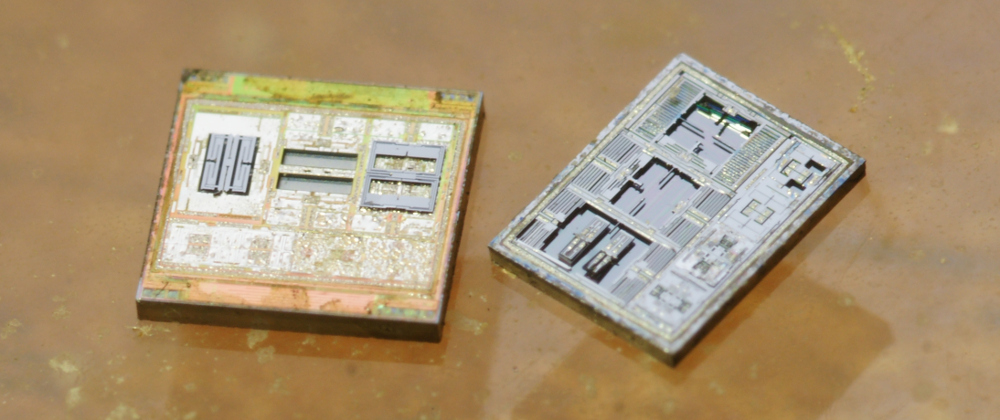
The first crystal:

Second crystal:
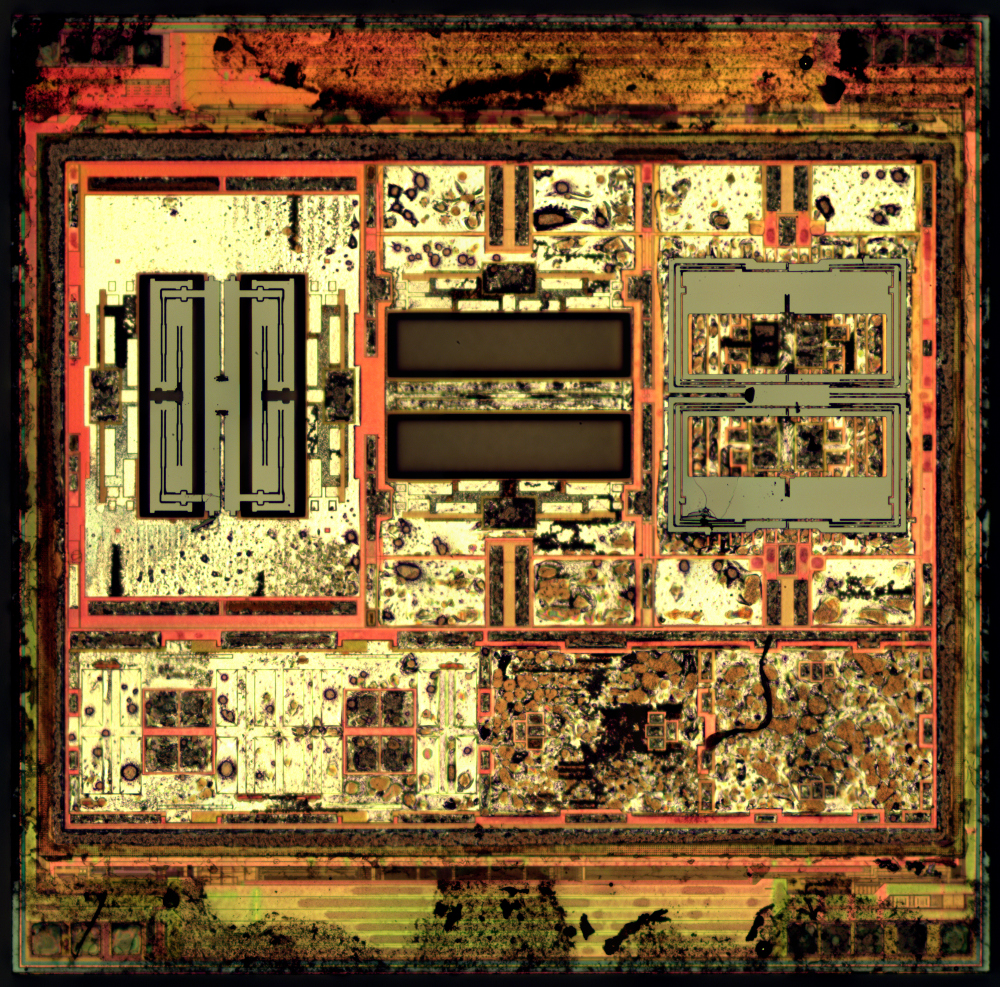
Under the micromechanical elements - the usual digital logic:

Static memory, production technology about 250nm:
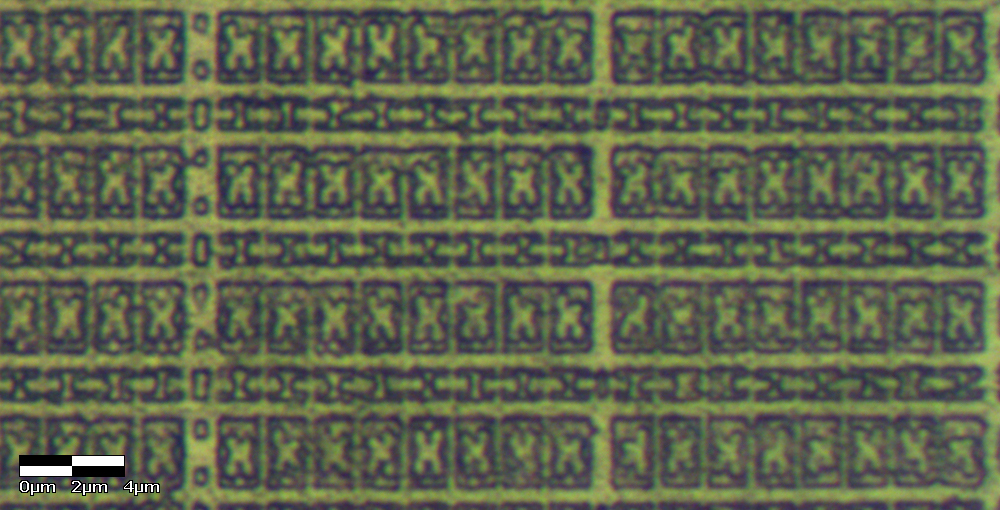
Microchip 24lcs52 - 2 kilobit EEPROM, used as SPD chip in memory modules:

Larger charge-pump: voltage multiplier on switchable capacitors (as for writing / erasing an EEPROM, you need a relatively high voltage). Here, the capacitors are green rectangles, and the “power” transistors are between them.

Another 2 kilobit EEPROM - ST 34C02 :

Ti TS5A3159 - 1.65-5V 2: 1 analog switch with fitted resistance of each channel ~ 1Ω and guarantee of a break before switching. Transistors to provide channel resistance 1Ω - occupy most of the crystal.
The crystal size is 1017x631 µm, the technology is 1µm.

The TI LM393 is a dual voltage comparator, one of the old electronics workhorses.
The crystal size is 704x748 µm.
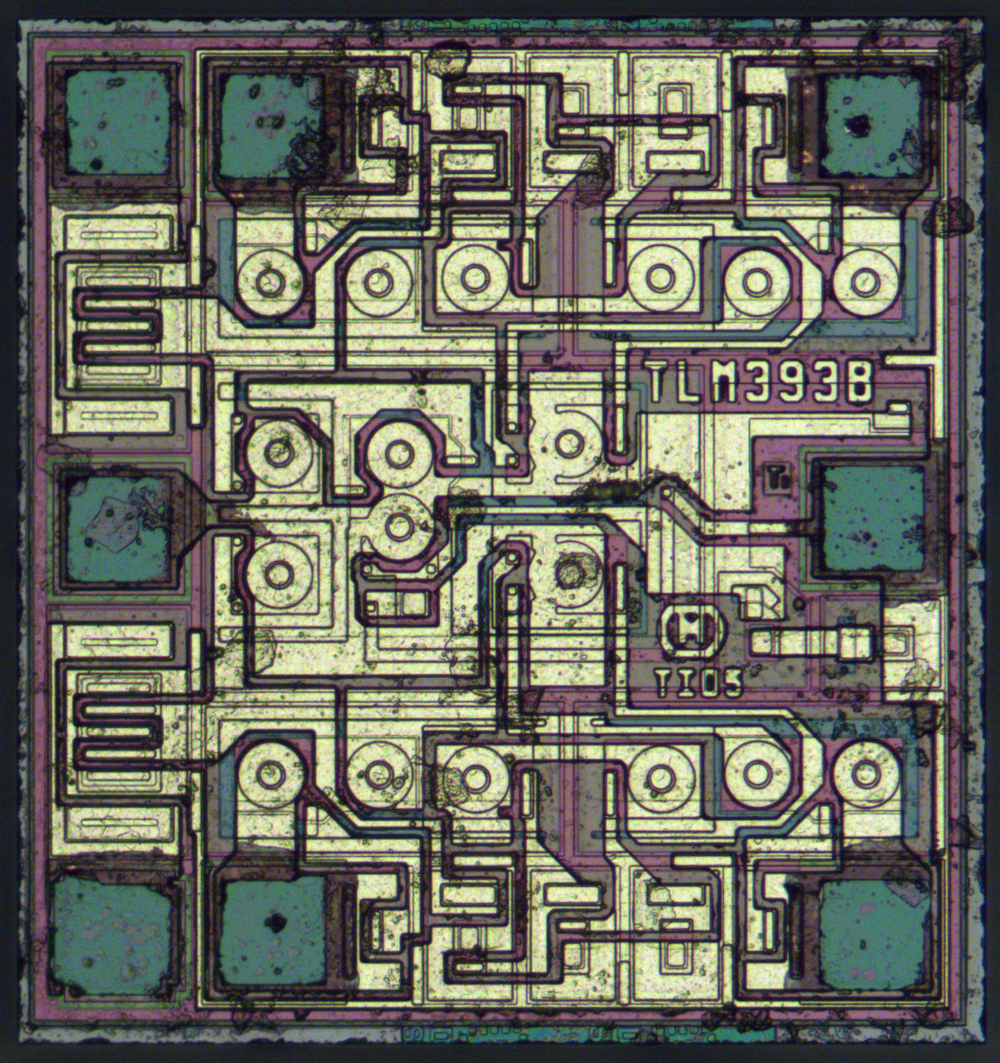
TI TL431 is a voltage shunt regulator often used in linear power supplies in combination with a powerful external transistor. A very old microcircuit for old technical processes - but still actively used in new developments. Specifically, this chip was decoupled from the AMD 4870 video card.
The crystal size is 1011x1013 µm.
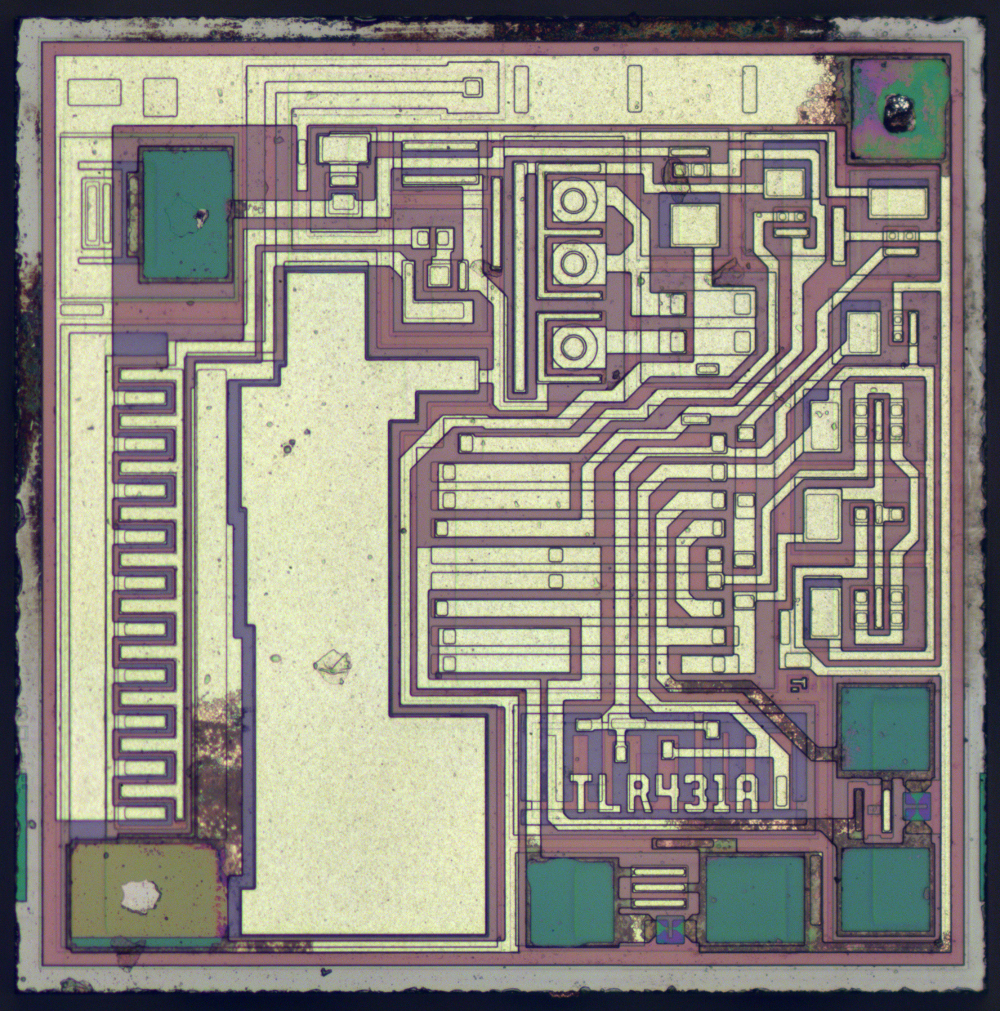
Ken Shirriff has already made a full annotation of the electrical circuit, he will publish a more complete post in the coming days or weeks, but for now the drawing Scheme can be seen here .
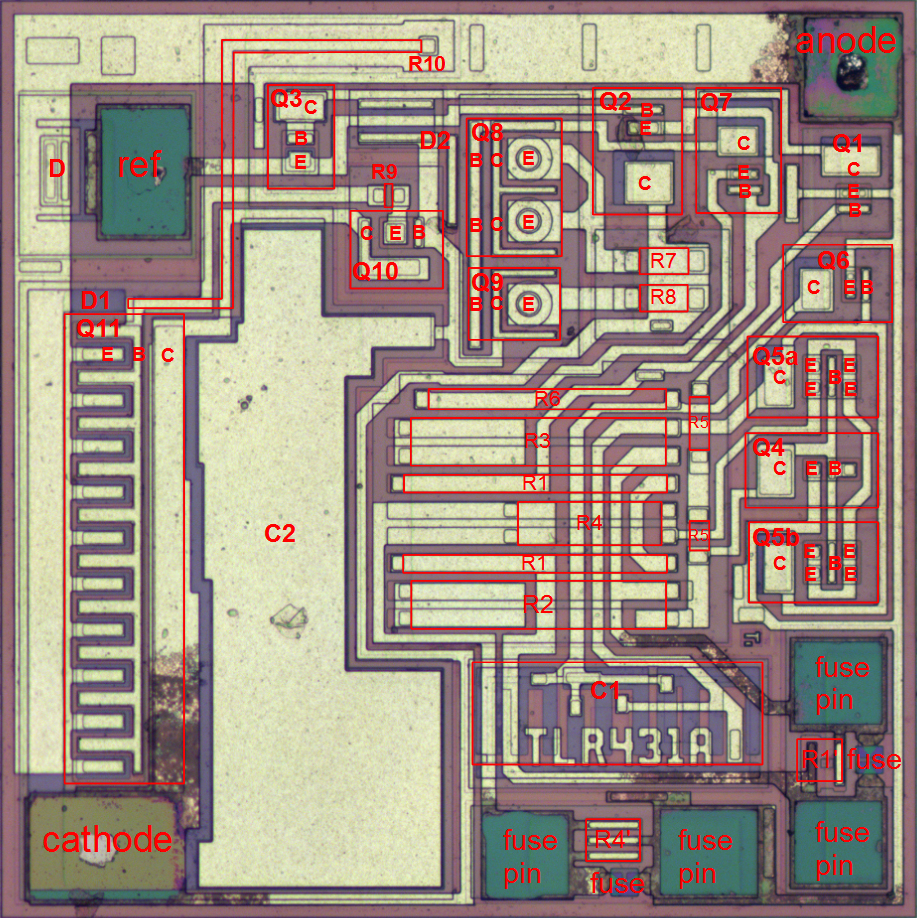
I already mentioned SiTime in the article about high-tech production in Russia . SiTime is one of the companies in which Rosnano invested money. SiTime SiT8008 - MEMS generator, which should replace quartz with greater reliability and comparable price. To ensure maximum Q-factor, the mechanical resonator is sealed in a vacuum inside a crystal.

The main crystal - catches the eye inductance for PLL:

After etching the plating:
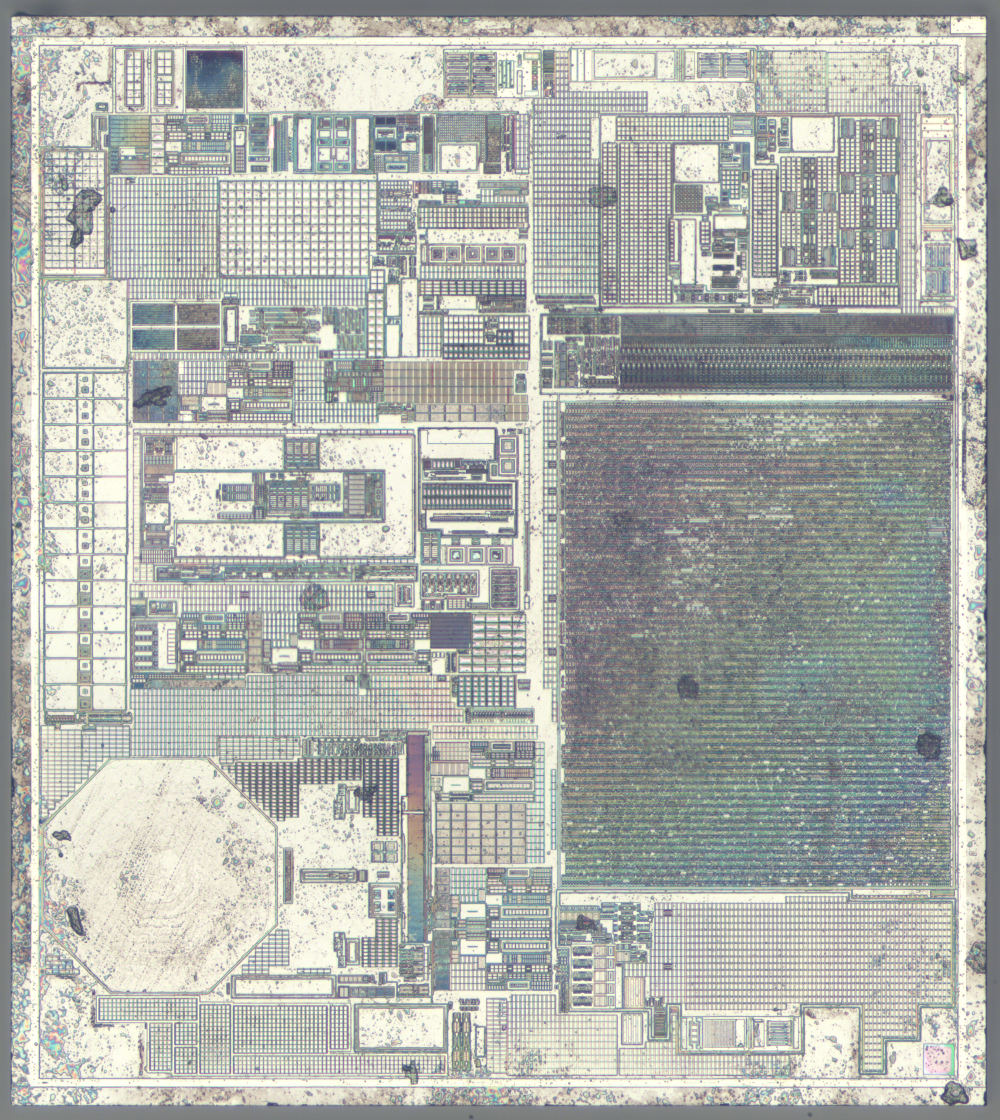
A close-up of standard cells is again a 250nm level technology.

NXP / Phillips PCF8574 - 8-bit I2C port extender, production technology 3 microns (!!!). It is still produced and sold. As you can see, it's not about production technology.

SkyWorks AAT4292 is a 7-bit I / O expander, with 1.1Ω 100mA keys in the upper arm.
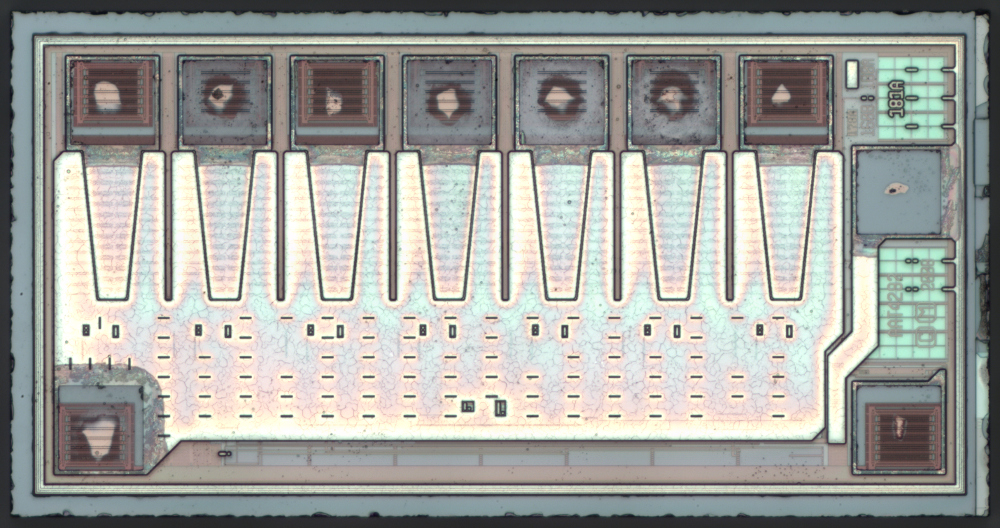
After etching the metallization, it is clear that 7 MOSFETs for a current of 100 mA occupied almost the entire area of the crystal:
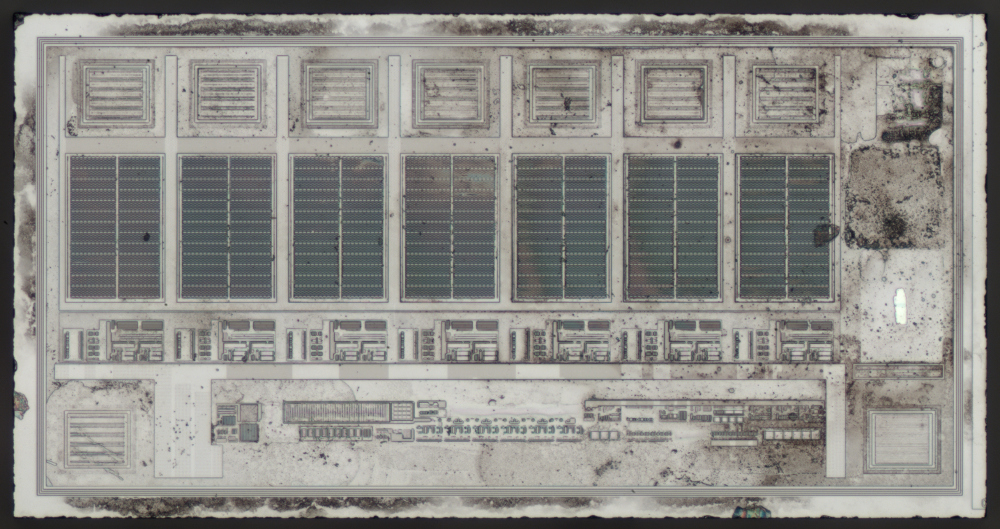
BK0010
Delicious last: Vslav-ohm was restored circuit of a series of chips from the computer BK0010 - the results are published here . According to the result of the analysis, a bug was even detected in the implementation of the floppy controller. As in the case of the PS1 - it is necessary to make absolutely accurate emulators.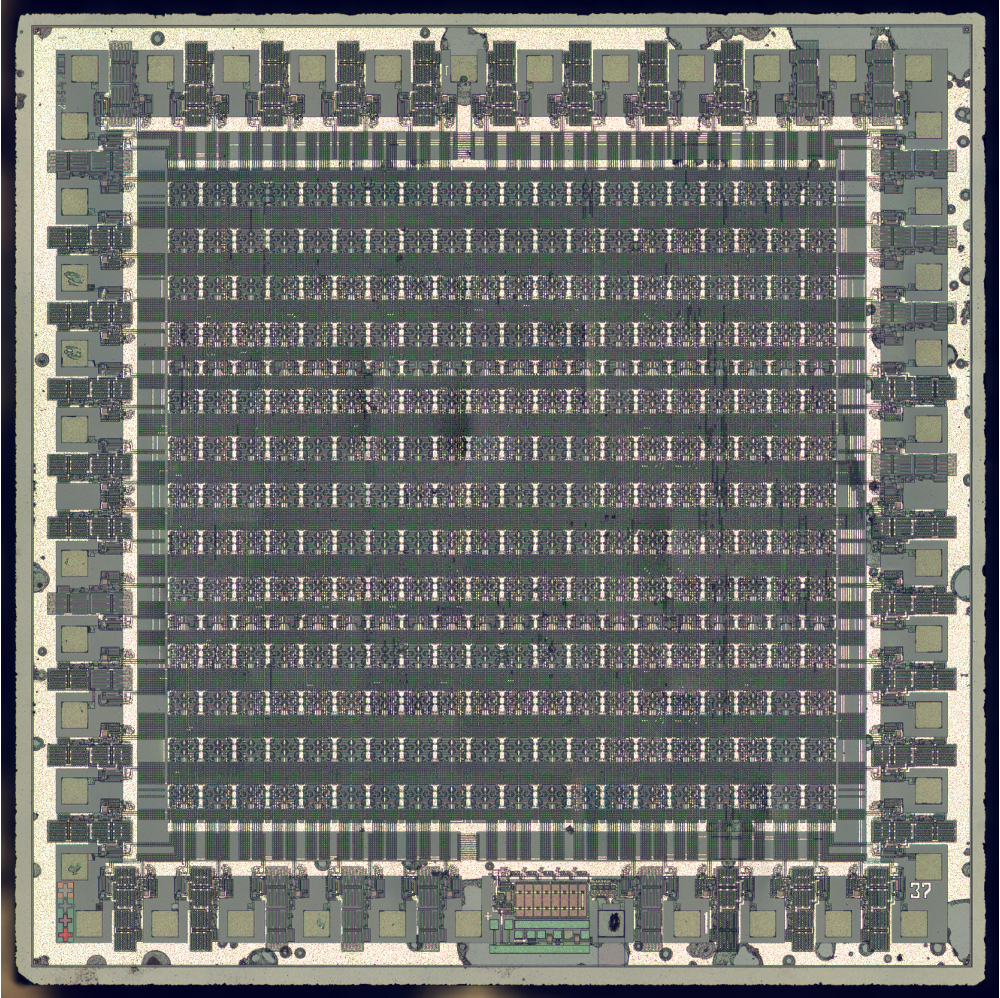
The entire series KR1801VP1 * is the BMC, the basic matrix crystal . In the BMC, all transistors / logic blocks ready to go out of the factory, it remains only to add a layer of metallization, which will connect them as needed. It turns out about as FPGA - only programming once and for all.
A piece of BMC is larger. The bright lines are the metallization with which a particular logic circuit is configured. You can read more about the base cell scheme here .
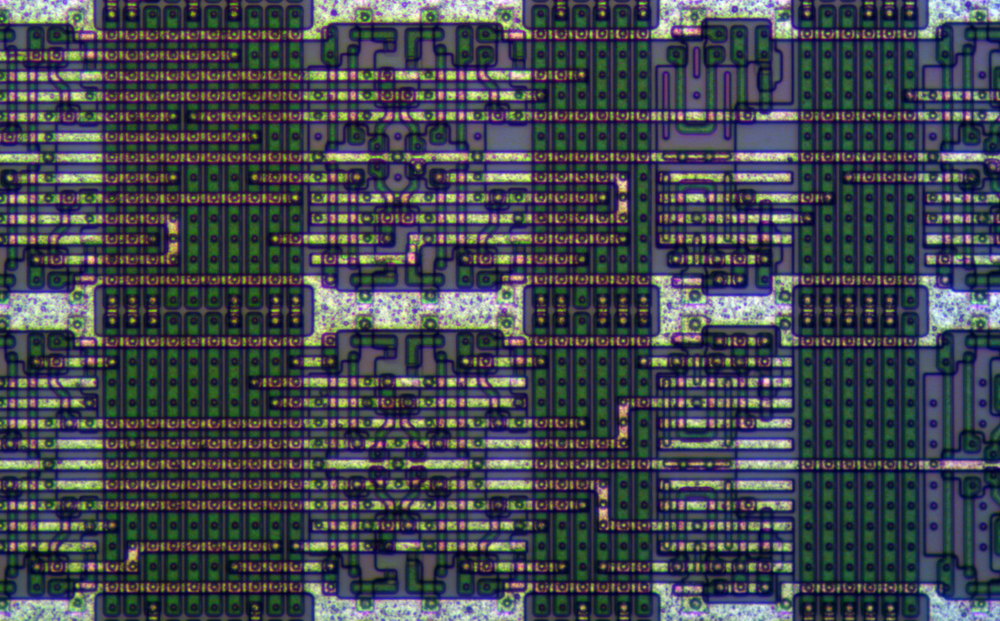
Future
More and more people are interested in restoring a circuit from microcircuits as a hobby - which is good news. The following candidates for the restoration of the scheme are KR1818VG93, the floppy disk controller popular in the exCCSR (2 chips are awaiting an acid bath with trepidation) and finally the KR580BM80A itself (interested people accumulate here ).
It is also interesting for me to try to restore the wolf hare game scheme - I was given one piece to the previous rally of collecting old iron , but the quality of the chip opening turned out to be unsatisfactory. Did anyone else have another game to be torn apart? You need a wolf hare, or a similar one with a mickey mouse (it is possible with a broken screen or other damage).
I hope this regular excursion to the microworld was interesting.
Update: TL431 schema annotation added
Source: https://habr.com/ru/post/223247/
All Articles